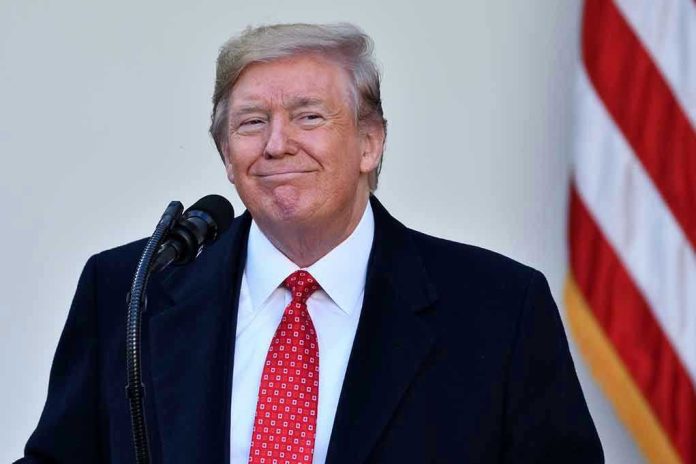
Democrats are betting big on a government shutdown fight, but if Trump’s plan is what insiders suggest, they may find themselves outmaneuvered and blamed at a moment when political consequences couldn’t be higher.
Story Snapshot
- Democrats threaten a shutdown to force policy concessions, especially on health care, as the October 1 deadline looms.
- Trump and GOP leaders have prepared contingency plans to shift blame onto Democrats and exploit the crisis for political gain.
- The Democratic caucus is sharply divided, with progressives demanding confrontation and moderates fearing backlash.
- The outcome will impact federal operations, public opinion, and set the stage for the 2026 midterms.
Democrats Escalate, Betting on Brinkmanship
September 2025 finds Democrats in Congress openly threatening to block government funding unless Republicans and President Trump concede on key demands—chief among them, enhanced Obamacare subsidies. Progressive pressure has forced Senate Minority Leader Chuck Schumer to harden his stance, abandoning the cautious approach he took earlier in the year after facing sharp criticism from his left flank for supporting a temporary funding bill. The Democratic Party, fractured between its confrontational progressives and pragmatic moderates, now faces a test of unity and nerve as October 1 approaches. The gamble: force Trump to the negotiating table or risk the economic and political fallout of a shutdown.
While Democrats present their threats as necessary leverage, the risks are steep. Previous shutdowns have shown that public opinion can shift rapidly, and the party that appears responsible often pays a heavy price at the polls. The party’s base, however, is in no mood for retreat, demanding lawmakers “hold the line” and refuse any resolution that does not deliver on health care and social spending priorities.
Trump’s Playbook: Seize the Narrative, Assign Blame
President Trump and Republican congressional leaders, holding majorities in both chambers but lacking a filibuster-proof edge, see an opportunity in the standoff. They have rejected Democratic “wish list” demands and proposed a clean continuing resolution, knowing it will be rebuffed. Their strategy is clear: paint Democrats as reckless obstructionists willing to shutter the government over partisan demands. Trump’s administration is prepared to implement contingency plans, including aggressive public messaging campaigns and targeted administrative actions designed to minimize visible pain for key GOP constituencies while highlighting disruptions in Democratic strongholds. This approach mirrors the successful tactics used during the 2018-19 shutdown, but with even greater emphasis on rapid-response media and social amplification.
The White House and GOP leaders are banking on the idea that Americans will view the shutdown as a Democrat-engineered crisis, especially if services like national parks, veterans’ benefits, and Social Security payments are shielded from the worst disruptions. Their public statements are explicit: “Democrats are willing to hold the government hostage to force through policies America doesn’t want.” For Trump, who thrives on framing every confrontation as a zero-sum contest, this is a chance to consolidate his base and force Democrats into a defensive crouch ahead of the 2026 midterms.
Divided Democrats: Pressure Mounts as Deadline Nears
Inside the Democratic caucus, tensions are reaching a boil. Senate progressives such as Elizabeth Warren and Chris Murphy argue that compromise has, so far, failed to contain Trump’s agenda and that a hardline stance is the only way to win real concessions. Moderates, still stung by the backlash from March’s temporary funding deal, warn that the party risks alienating swing voters and being blamed for the shutdown’s inevitable disruptions. Calls for Schumer’s ouster from party leadership have grown louder, with some activists demanding a total break from “business as usual” politics.
This internal struggle plays out against a backdrop of relentless media coverage and public uncertainty. The American public, weary after previous shutdowns, faces the prospect of furloughed federal workers, delayed paychecks, and suspended services. Government contractors and recipients of federal aid are left in limbo, while the broader economy braces for reduced consumer confidence and increased market volatility. Both parties understand that the blame game will determine not just the immediate outcome, but also the narrative heading into the next election cycle.
Stakes: Federal Disruption, Political Repercussions, and the Future of Shutdowns
A shutdown would disrupt federal services, furlough tens of thousands of workers, and inject new uncertainty into an already volatile economic environment. Longer term, the outcome will shape congressional strategy for years to come. If Trump succeeds in turning the tables on Democrats, future opposition leaders may think twice before using shutdowns as leverage. Conversely, if Democrats extract meaningful concessions or shift blame to the GOP, the shutdown threat could become an even more common feature of partisan combat.
Political analysts warn that Democrats’ gamble could backfire, especially if Trump’s contingency plans blunt the most visible impacts or if the media narrative turns against the shutdown architects. Others argue this is the price of fighting for essential policy goals in an era of divided government and that the alternative—perpetual compromise—has already proven futile. Whatever the result, few doubt that the coming weeks will test the limits of brinkmanship and reshape the political landscape as the nation heads toward the 2026 midterms.



